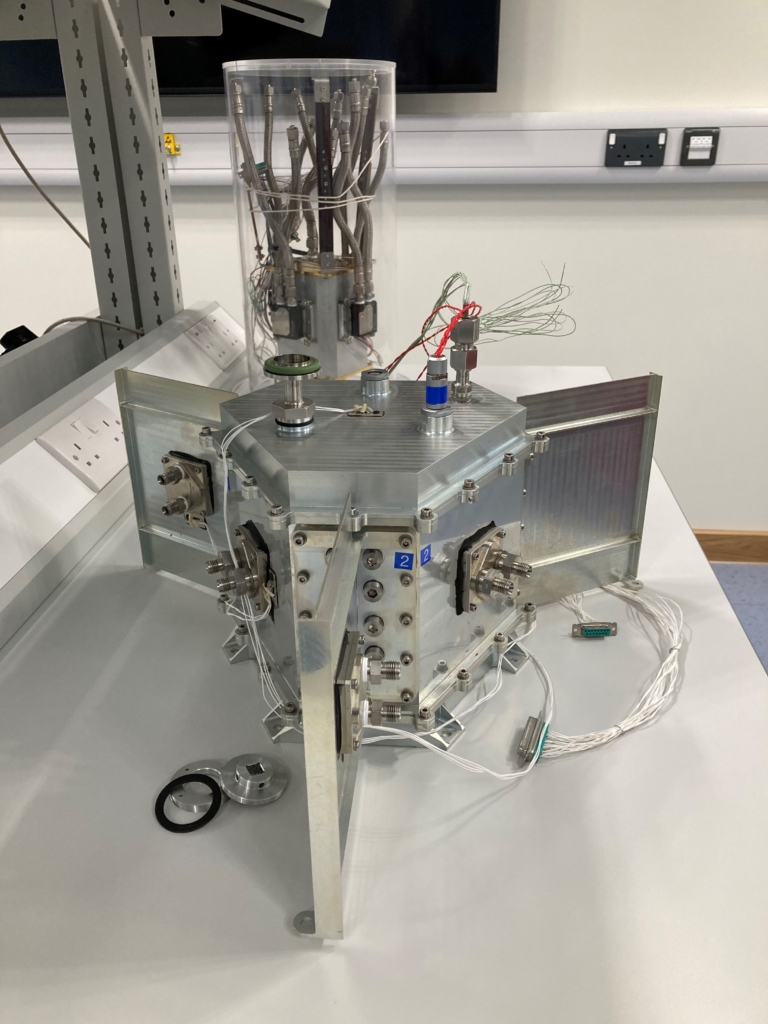Model of the University of Leicester’s Radioisotope Thermoelectric Generator.

A space battery, or RPS houses radioactive material that gives off heat as it decays by the production of alpha particles. This energy is used either as heat or can be converted into electricity to power systems and sensors. Typically, the conversion of the heat is done using thermoelectrics, simple passive systems that convert a temperature difference into an electrical current using the Seebeck effect. Other approaches under development include the use of Stirling Engines. These are a dynamic system which add complexity but offer the potential for a greatly improved efficiency for the conversion.
Space Battery Uses
Space batteries were invented in the 1950s and were used on all the Apollo moon landings, Mars rovers and the spacecraft currently exploring the deep solar system. They emit steady heat for decades that can be used to keep spacecraft and power systems alive. For example, a lunar night lasts 14 days – which means two weeks without any solar power. Temperatures can drop to around -150°C, damaging the equipment on board. For deep space missions, power means that vital data and images can be sent back to earth. This is why space batteries are on the European Space Agency’s list of ‘mission critical’ technologies and one of the fundamental programmes for the UK Space Agency.

